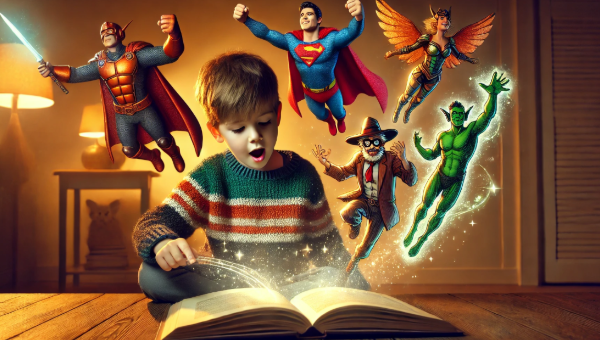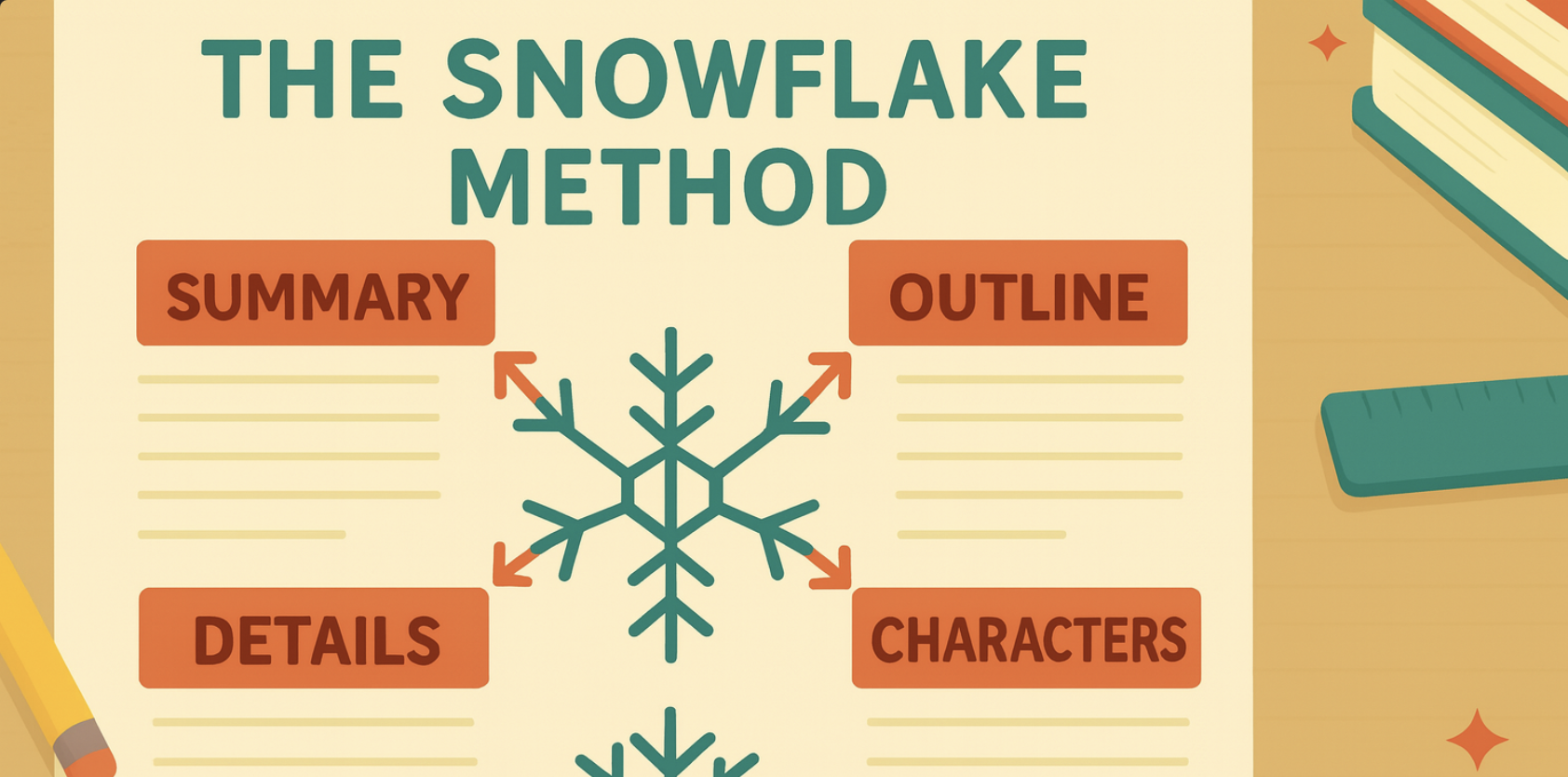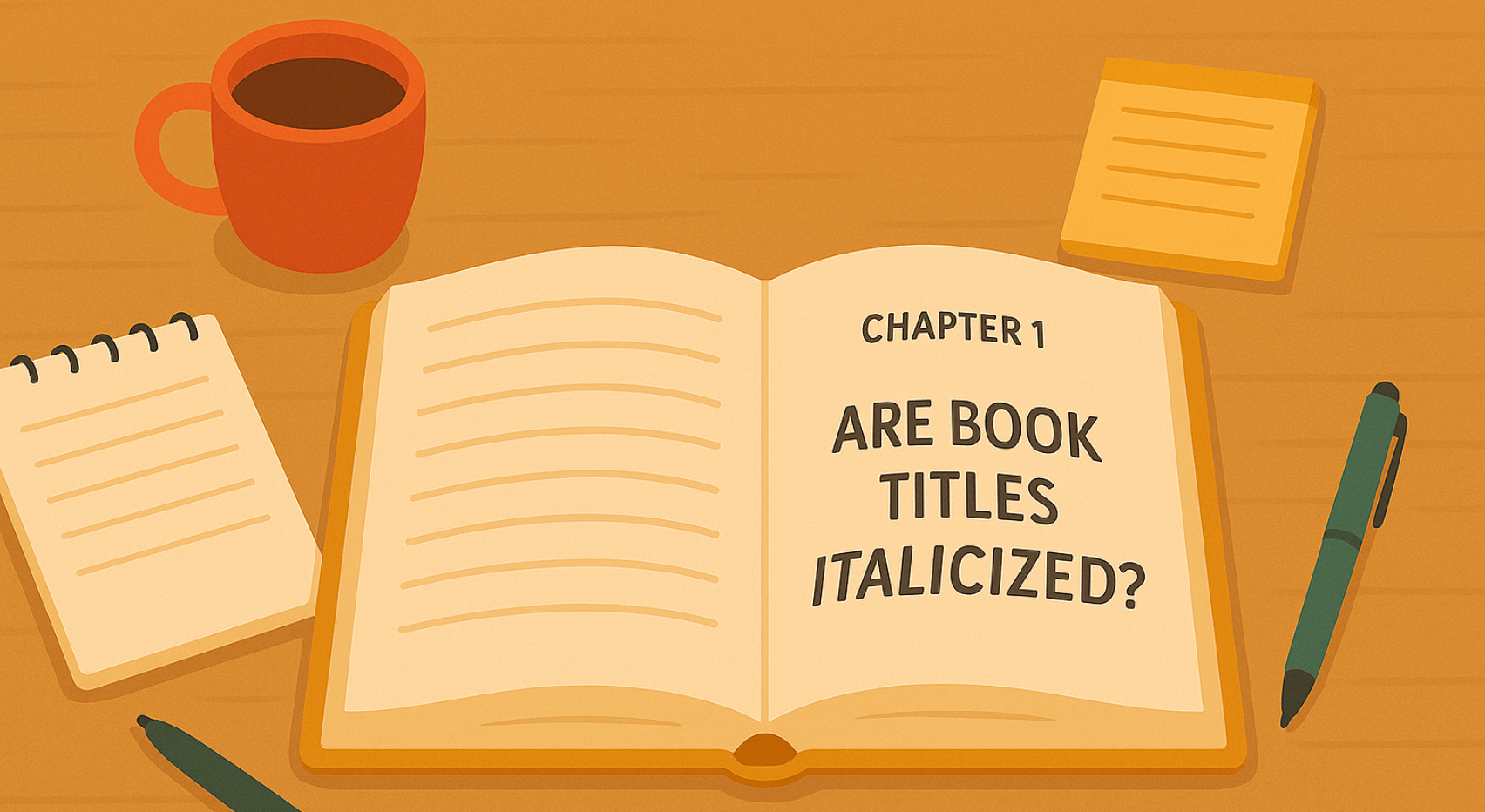Creating memorable characters for children’s books might seem like a breeze. After all, just add a cape, a catchphrase, and a penchant for mischief, right? But in the realm of children’s literature, truly unforgettable characters—the ones kids will recall years later and maybe even tell their kids about—take a bit more magic. It’s not just about making them funny or brave; it’s about crafting heroes and villains with depth, quirks, and, most importantly, a story worth following.
When we think of classic characters like Harry Potter, the ever-hungry Very Hungry Caterpillar, or the always-lost Paddington Bear, what makes them linger in our minds? They’re not perfect. In fact, they’re sometimes as flawed as they are fabulous, which makes them relatable to kids who know all about imperfections—whether it’s dropping an ice cream cone or forgetting to feed the goldfish. In this guide, we’ll explore the traits that make characters unforgettable, the subtle art of adding quirks, and the fun of balancing heroics with a bit of villainy.
Understanding the Needs of Young Readers
When creating characters for children, it’s essential to write and think like your audience. Young readers are savvy and often see right through overly perfect heroes. They want characters who make mistakes, who struggle, and who sometimes act a little “just a nuisance,” much like they do themselves.
Every favorite children’s book character has certain traits that resonate with young readers. A young reader facing their own “first day” or learning to “deal” with an annoying sibling will connect deeply with characters who understand their world. From relatable struggles to funny moments and small victories, children’s literature thrives on characters who turn the everyday into an adventure.
Key Traits of Beloved Children’s Book Characters
Memorable characters have certain traits that resonate with young readers. Every favorite children’s book character has certain traits that resonate with young readers. Courage, kindness, humor, and a touch of vulnerability can turn an ordinary character into one kid’s love. Take Winnie the Pooh, who may not be the brightest but is always kind, or Peter Rabbit, whose curiosity often leads him straight into (and sometimes out of) trouble. These characters teach subtle but important life lessons while keeping children entertained.
Your Publishing Journey Awaits – Start NowBeloved characters are often a delightful contradiction—courageous yet scared, funny yet serious. These qualities make characters feel real and help young readers see them as friends. Creating characters with these relatable traits can give them a lasting place in children’s hearts.
Classic Characters in Children’s Literature
Classic characters in children’s literature have been a staple of childhood for generations. These characters have been loved and cherished by children and parents alike, and have played a significant role in shaping the world of children’s literature. From the beloved Winnie the Pooh to the Very Hungry Caterpillar, these characters have become an integral part of our cultural heritage.
One of the most iconic classic characters in children’s literature is Winnie the Pooh. Created by A.A. Milne, Winnie the Pooh is a lovable and silly bear who has captured the hearts of children and adults alike. With his wild imagination and love for honey, Winnie the Pooh has become a beloved character in children’s literature.
Another classic child character that has stood the test of time is the Very Hungry Caterpillar. Created by Eric Carle, the Very Hungry Caterpillar is a colorful and engaging character that has taught children about the life cycle of a butterfly. With its simple yet effective storytelling, the Very Hungry Caterpillar has become a classic character in children’s literature.
Peter Rabbit is another classic character that has been loved by children for generations. Created by Beatrix Potter, Peter Rabbit is a mischievous and adventurous character who has captured the hearts of children and parents alike. With his love for exploration and getting into trouble, Peter Rabbit has become a beloved and popular character even in children’s literature.
These classic characters have played a significant role in shaping the world of children’s literature, and continue to be loved and cherished by children and parents alike. They have taught children valuable lessons about friendship, imagination, and the importance of following your dreams.
Modern Characters in Children’s Literature
Modern characters in children’s literature have brought a fresh and exciting perspective to the world of children’s books. From the Harry Potter series to modern classics like Matilda, these characters have captured the hearts of children and adults alike.
One of the most iconic modern characters in children’s literature is Harry Potter. Created by J.K. Rowling, Harry Potter is a brave and loyal character who has captured the hearts of children and adults alike. With his remarkable power and determination to fight against evil, Harry Potter has become a beloved character in children’s literature.
Matilda is another modern character that has become a classic in children’s literature. Created by Roald Dahl, Matilda is the tale of an exceptional young girl who has been treated poorly by her parents. She suddenly discovers her extraordinary abilities, and with her remarkable power and determination to fight against injustice, Matilda has become a beloved character in children’s literature.
Modern characters in children’s literature have brought a fresh and exciting perspective to the world of children’s books. They have taught children valuable lessons about bravery, loyalty, and the importance of standing up for what is right.
Crafting Heroes and Role Models
Children’s book heroes are more than just perfect kids with superpowers; they’re role models who grow, struggle, and learn. Think of Harry Potter, who isn’t simply “The Boy Who Lived,” but a boy dealing with loss, responsibility, and fear. Or consider Jo March, the ultimate “exceptional young girl,” who defies social expectations while pursuing her dreams. Another favorite children’s book character is Anne Shirley from ‘Anne of Green Gables,’ known for her unique personality traits and themes of individuality and emotional expression.
When crafting your hero, it’s essential to strike a balance between strength and vulnerability. Heroes should inspire young readers but also reflect their own fears and insecurities. Whether they have a “remarkable power” or a “wild imagination,” these characters inspire by being human. After all, nothing captivates kids more than seeing someone like them take on the world.
Developing Unique and Engaging Villains
What’s a hero without a villain? Every great story needs an antagonist to shake things up and push the hero to grow. In children’s literature, villains don’t have to be terrifying, but they should be memorable. Characters like the witch in Hansel and Gretel or the conniving Augustus Gloop in Charlie and the Chocolate Factory provide just enough menace without causing sleepless nights.
Creating a villain with a touch of humor or a quirky flaw can make them both memorable and a little less frightening. Maybe they have a strange obsession with polka dots or a habit of forgetting the main character’s name. A great children’s book villain challenges the hero without overpowering the story, reminding young readers that even the “bad guys” have a bit of silliness in them.
Everyday Characters with Relatable Lives
Sometimes the most memorable characters in children’s books are those who face life’s small challenges with humor and resilience. Characters like the Very Hungry Caterpillar and Grumpy Monkey are beloved because they deal with everyday struggles that resonate with kids. The Caterpillar’s endless quest for food mirrors every child’s love for snacks, while Grumpy Monkey captures the feeling of just having a “bad day.”
Your Publishing Journey Awaits – Start NowCreating everyday characters shows young readers that life doesn’t always need big adventures to be interesting. With the right touch, even simple situations can become captivating tales of resilience, humor, and growth. Kids love seeing characters handle situations they themselves encounter, whether it’s dealing with a “just a nuisance” sibling or navigating a “first-day” adventure.
Characters with Wild Imaginations and Big Adventures
Characters with a wild imagination and larger-than-life adventures give children an escape to places only books can take them. From Willy Wonka’s chocolate factory to the magical world of Narnia, these adventures show young readers the power of imagination and the joy of discovery. Such tales allow children to see that they, too, can create worlds and go on adventures in their minds.
By creating characters who explore uncharted lands, face mythical creatures, or suddenly discover hidden powers, authors give children a sense of wonder and excitement. Big adventures add color to children’s books, letting kids know that while their own lives might be “everyday life,” they can dream of far-off places where anything is possible.
Crafting Memorable Friends and Sidekicks
Great heroes and even villains often need sidekicks to help them along their journey. Characters like Christopher Robin for Winnie the Pooh or Hermione Granger for Harry Potter add depth to the main character’s life and provide the necessary support (or comedic relief).
A memorable sidekick or friend adds richness to the main characters and the story, teaching young readers about the value of friendship, teamwork, and kindness. Creating friends and sidekicks allows authors to show different sides of the main character, making them feel like part of a larger world and, ultimately, more relatable to readers.
The Power of Illustrations in Children’s Books
Illustrations play a crucial role in children’s books, transforming words into vivid images that capture the imagination of young readers. A well-designed illustration can convey complex emotions and themes in a way that is accessible to children, making the story more engaging and easier to understand.
The use of color, texture, and composition in illustrations creates visually appealing images that draw readers in and enhance the storytelling experience. For instance, the vibrant hues in The Very Hungry Caterpillar not only make the book visually stunning but also help convey the caterpillar’s insatiable appetite and transformation.
Illustrations also help to break up the text, creating a sense of pacing that keeps young readers engaged. They provide valuable context and background information that may not be explicitly stated in the text, enriching the reader’s understanding of the characters and their world. For example, the detailed illustrations in Where the Wild Things Are bring Max’s wild adventure to life, making the story more immersive.
The best illustrations are those that complement the story and enhance the reader’s understanding. By combining text and image, illustrations create a rich and immersive experience that leaves a lasting impression on young readers. They inspire creativity, spark imagination, and foster a love of reading that will last a lifetime.
Writing Effective Character Dialogue
Writing effective character dialogue is a crucial aspect of creating believable and memorable characters in children’s literature. Dialogue should reveal character traits, relationships, and motivations, while also advancing the plot. Each character’s dialogue should be unique, reflecting their personality, background, and experiences.
To make dialogue engaging, it should be concise and natural-sounding, avoiding overly formal or stilted language. Think of how Harry Potter and his friends converse in the Harry Potter series—each character has a distinct voice that feels authentic and relatable. The use of dialect, idioms, and colloquialisms can add flavor and authenticity to dialogue but should be used sparingly to avoid confusion.
Pacing is also important in dialogue. It should create tension, suspense, and emotional resonance, drawing readers into the story. The best dialogue feels spontaneous and unforced, yet still conveys important information and insights into the characters. For example, the witty banter between Matilda and Miss Honey in Matilda reveals their bond and mutual respect.
By crafting effective character dialogue, authors can bring their characters to life, creating a rich, immersive reading experience for young readers. Memorable characters often have memorable lines, and well-written dialogue is key to achieving that.
Embracing Diversity and Representation
Today’s children’s literature is more diverse than ever, reflecting the importance of creating characters who represent a wide range of backgrounds, cultures, and experiences. Diversity in characters allows young readers to see themselves in books, learning empathy and understanding through stories that reflect the world around them.
Your Publishing Journey Awaits – Start NowBooks like Wonder by R.J. Palacio show children that everyone faces challenges, while characters from different cultures and abilities offer readers a glimpse into lives they may not encounter every day. By crafting characters that represent a spectrum of experiences, authors create a richer world for all children to explore.
Avoiding Common Characterization Mistakes
One common mistake in characterization is making characters too perfect or one-dimensional. Characters should be flawed and relatable, with their own strengths and weaknesses. Avoid using stereotypes or relying on tired tropes; instead, strive to create unique and nuanced characters.
Characters should grow and change over the course of the story, learning from their experiences and mistakes. This growth makes them more relatable and engaging. For instance, Harry Potter’s journey from a timid boy to a brave young man is a key part of what makes him a beloved character.
Avoid using characters as mere plot devices or convenient excuses for exposition. Each character should have their own distinct voice and perspective and should be treated with respect and dignity. Consistency in actions and motivations is crucial, yet characters should still be capable of surprise and growth.
By avoiding these common characterization mistakes, authors can create rich, believable characters that will captivate and inspire young readers. Memorable characters are those who feel real, with all their imperfections and complexities, making them relatable and unforgettable.
The Impact of Children’s Book Characters
Children’s book characters have a significant impact on children’s lives. A favorite children’s book character, like Anne Shirley from ‘Anne of Green Gables,’ can inspire, educate, and entertain children, playing a significant role in shaping their worldview. From classic characters like Winnie the Pooh to modern characters like Harry Potter, these characters have become an integral part of our cultural heritage.
Children’s book characters can inspire children to be brave, loyal, and determined. They can teach children valuable lessons about friendship, imagination, and the importance of following your dreams. They can also provide children with a sense of comfort and security, and help them to navigate the challenges of everyday life.
In addition to their inspirational and educational value, children’s book characters can also provide children with a sense of escapism and entertainment. They can transport children to magical worlds and fantastical lands, and provide them with a sense of wonder and awe.
Overall, children’s book characters have a significant impact on children’s lives. They can inspire, educate, and entertain children, and play a significant role in shaping their worldview.
Finalizing Your Character’s Voice and Personality
A character’s voice is what truly sets them apart. The way they talk, their unique quirks, and their mannerisms make them unforgettable. Is your character always trying to save the day but humorously failing? Or maybe they’re a know-it-all who sometimes isn’t so sure. Developing a unique voice and personality is crucial to creating a character that kids will remember long after the last page.
In addition, a character’s voice can be a great place to inject some humor or wordplay, especially if they’re dealing with “trouble” or strange situations. It’s these little details that make characters feel real and relatable, transforming them from just words on a page to kids’ lifelong best friends themselves.
Conclusion: Crafting Unforgettable Creations for a Lifetime of Love
Creating memorable characters in children’s literature isn’t about big powers or flawless lives; it’s about crafting personalities that kids can laugh with, cry with, and grow with. The magic of a character comes from their quirks, their challenges, and their adventures. Whether it’s an “exceptional young girl” facing her first day at school or a bear with a penchant for marmalade, these characters give children a world to step into, a friend to relate to, and a hero to admire.
So, the next time you sit down to create a character, remember: kids love characters who feel like family, with a dash of humor, a touch of adventure, and enough imperfection to be perfectly memorable.
Creating unforgettable characters is just the beginning. Ready to bring your children’s book to life? At Spines, we offer tools and expert guidance to turn your manuscript into a beautifully published book. Schedule a 15 free min consultation call.
Your Publishing Journey Awaits – Start Now







